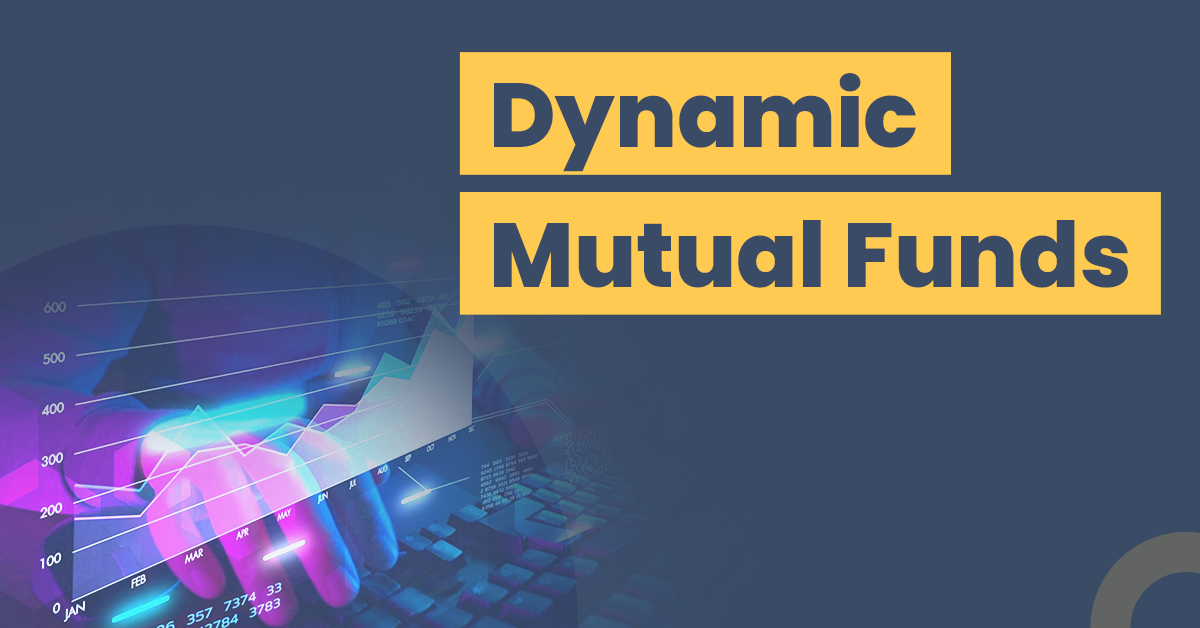Dynamic Bond Funds: Definition, Benefits, Risk and Things to Consider


Dynamic bond funds are debt funds that take full advantage of movements in interest rates and adjust their asset allocation accordingly to yield maximum potential returns. Unlike other bond funds, investors do not have to worry about watching market fluctuations and continually shifting assets.
These funds tend to be more volatile than short- and medium-duration debt funds. However, dynamic bond funds have the potential to generate higher returns.
Read to know its essential details.
What Are Dynamic Bond Funds?
Dynamic bond funds are a class of mutual funds with a dynamic allocation of assets in debt instruments. These debt funds aim to deliver maximum returns in rising and falling interest rate cycles. Additionally, the maturity period of the debt instruments in which these funds invest is unrestricted.
Fund managers of dynamic bond funds focus on managing the portfolio dynamically in response to changes in interest rates. They also take into account the overall conditions of the economy and the market.
Note that there may be gaps between changes in interest rates. These can affect the returns that these bonds yield. Therefore, dynamic bond funds are a good option for investors who wish to earn decent returns from their bond investments, irrespective of interest rate changes.
How do Dynamic Bond Funds Work?
A characteristic feature of dynamic bond funds is that they can show significant variation in the types of debt securities they invest in. These funds invest in government securities, corporate bonds, and money market instruments. Additionally, depending on the favourable market conditions, it can switch between short-term and long-term bonds.
The fund manager decides to change the Macaulay duration of dynamic bond funds. They must assess the markets and decide based on their interest rate outlook.
If they believe interest rates are about to fall, they may switch to long-term bonds to earn profits from price appreciation. On the other hand, if the fund manager sees that interest rates cannot fall further, they might choose to switch to short-term bonds to mitigate losses.
The fund manager carefully designs asset allocation plans to make the most of available opportunities.
What Are the Benefits of Dynamic Bond Funds ?
Listed below are the benefits of investing in dynamic bond funds:
- First, investors receive exposure to a well-diversified portfolio for a debt fund.
- Dynamic bond funds might provide higher returns if one remains invested for a longer period of time. So, it is a good option for planning long-term financial requirements.
- The fund manager will constantly be looking to take full advantage of changing interest rate scenarios.
- These tend to be less volatile compared to long-duration debt funds.
- Moreover, dynamic bond funds ensure liquidity when the market offers the appropriate opportunity.
What Are the Risks of Dynamic Mutual Funds?
Listed below are the risks associated with these mutual funds:
- The fund manager modifies and adjusts the asset allocation depending on the prevalent market and economic conditions. Such modifications may not always work well for investors.
- Debt assets of dynamic bond funds are associated with liquidity and credit risks.
- Credit risk occurs when the issuers of securities cannot fulfil their obligations to pay interest and the principal amount. It applies to the non-government security portion of the portfolio.
- Fund managers may be unable to sell underlying assets, getting affected poorly by liquidity risks.
Who Should Invest in Dynamic Bond Funds?
Given below are details about f people who should consider investing in dynamic bond funds:
- Investors who are market savvy enough to evaluate and understand the movements of interest rates can invest in dynamic mutual funds.
- People who wish to benefit from changing economic and market conditions may invest in these funds.
- Individuals with an investment horizon of a minimum of three to five years might benefit from investing in a dynamic bond fund.
- Investments in these funds are not suitable for new investors.
- Investors who have a moderate risk tolerance may invest in dynamic bond funds. Additionally, Systematic Investment Plans (SIP) are an ideal mode of investment as they help deal with interest rate volatility.
Things to Consider before Investing in Dynamic Bond Funds
Given below are some important factors that investors must consider before choosing dynamic bond funds:
- Fund manager
Investors must do thorough research on the expertise of fund managers. They need to assess how he has performed across different interest rate regimes. Evaluating their past performances is crucial because the fund manager plays a critical role in the success of dynamic bond funds.
- Macroeconomic matters
Changes in the fiscal deficit, government policies, and oil and gas prices affect the interest rates of bonds. Therefore, investors must consider such macroeconomic factors and opt for a more extended investment period. They may protect their investments against transient risks by doing this.
- No fixed investment mandate
Debt mutual funds must comply with the investment mandate as prescribed by the Securities and Exchange Board of India (SEBI). For example, a long-duration debt fund must invest only in long-term securities. But dynamic bond funds do not remain tied down to any particular investment mandate. They are free to invest across duration and credit profiles.
- Risk appetite
If an investor’s risk appetite lies on the conservative side, then investing in a dynamic bond fund might not be suitable. These funds are ideal for investors with at least a moderate risk appetite. Before investing, one should make sure to check the credit risk of the underlying securities.
- Fund’s past performance
Though accurate data about these funds’ performances in the past may not be available, investors should consider how the fund has performed in the previous five years. Additionally, one should consider their performance in the rising interest rate scenario.
Taxability of Dynamic Bond Funds
Discussed below are essential points regarding the taxability of dynamic bond funds:
- Like other debt funds, these funds are subject to taxation.
- The dividends that an investor receives from dynamic bond funds get added to their total income. The Income Tax authorities levy taxes per the individual’s income tax slab rate.
- Suppose an investor sells off his dynamic bond fund units within three years and earns profits. In that case, the Income Tax department considers it as short-term capital gains (STCG). . These gains are regarded as the investor’s income and taxed as per their income tax slab rate.
- However, suppose an individual sells off their units after a holding period of three years and earns profits. In that case, the Income Tax department sees it as long-term capital gains (LTCG). Here, the LTCG tax is 20% after indexation.
List of Top Dynamic Bond Funds in India
The table below lists the top 10 dynamic bond funds in India according to their five-year annualised returns:
| Name of Dynamic Mutual Funds | 5-Year Annualised Returns (%) |
| ICICI Prudential All Seasons Bond Fund – Direct Plan | 7.91 |
| Kotak Dynamic Bond Fund – Direct Plan | 7.62 |
| Axis Dynamic Bond Fund – Direct Plan | 7.36 |
| SBI Dynamic Bond Fund – Direct Plan | 7.15 |
| IDFC Dynamic Bond Fund – Direct Plan | 7.04 |
| PGIM India Dynamic Bond Fund – Direct Plan | 6.87 |
| Mirae Asset Dynamic Bond Fund – Direct Plan | 6.76 |
| DSP Strategic Bond Fund – Direct Plan | 6.74 |
| IIFL Dynamic Bond Fund – Direct Plan | 6.45 |
| L&T Flexi Bond Fund- Direct Plan- Growth | 6.44 |
*Returns data as of November 21, 2022
Final Thoughts
This blog provides essential details related to dynamic bond funds, their benefits, associated risks and its suitability. These debt funds aim to take advantage of prevailing interest rates by changing their asset allocation. As such, their returns largely depend on the skill of the fund manager responsible.
Frequently Asked Questions (FAQs)
Are dynamic bond funds and dynamic asset allocation funds the same?
No, dynamic bond funds are debt mutual funds that invest in debt securities with varying maturity periods. On the other hand, dynamic asset allocation funds are hybrid funds that invest in equities and debt instruments. These hybrid funds can invest anywhere from 0 to 100% in equities and the rest in debt.
What are essential documents that one needs to invest in dynamic mutual funds?
Investors need to keep ready their PAN card, bank account details and KYC verification details if they wish to invest in dynamic mutual funds. People can make investments through Demat and online trading accounts, electronic money transfers (IMPS, RTGS, NEFT) or electronic clearing services (ECS).
Are debt funds safer than equity funds?
There is a general perception that debt funds are safer than equity funds. Due to the former’s issuers’ timely payment of principal and interest, this is the case. Low variability in the prices of the bonds compared to that of equity has also given rise to this perception.
What are the various money market instruments?
Money market instruments are short-term and highly liquid debt instruments with a maturity period of less than one year. It includes commercial bills, treasury bills, commercial papers and government securities with a maturity of up to one year.
Additionally, certificates of deposits, call or notice money and permitted securities under reverse and repo agreements fall under money market instruments. Moreover, it includes any other instrument that RBI has allowed under this category.




